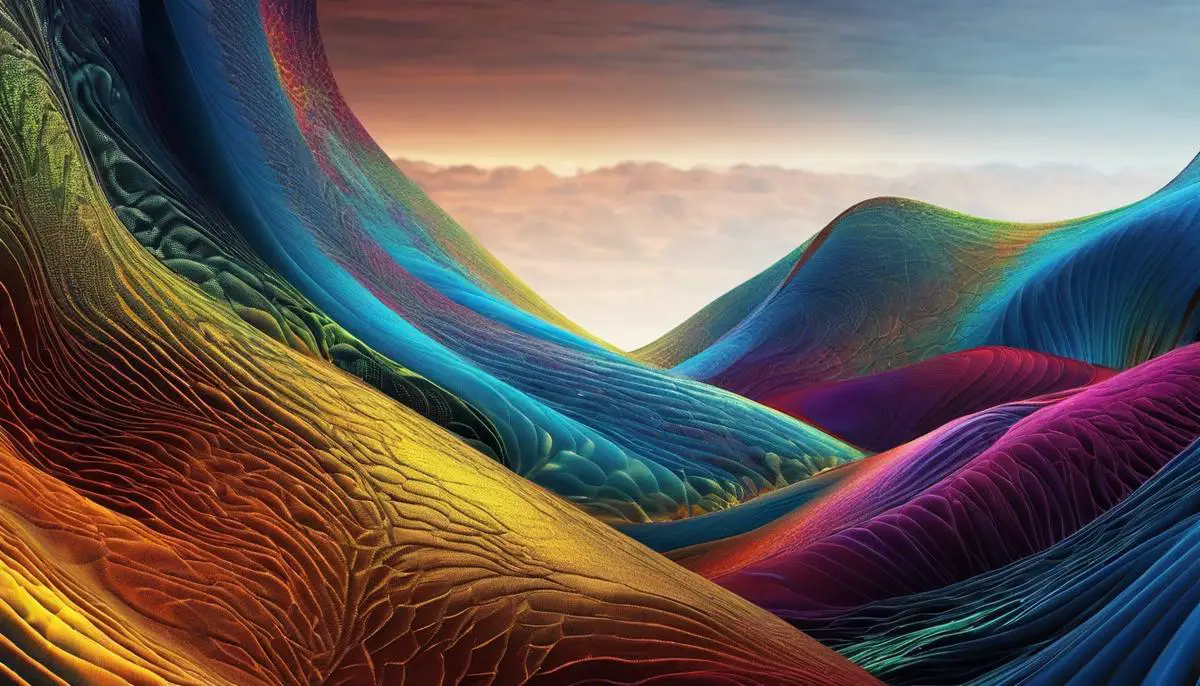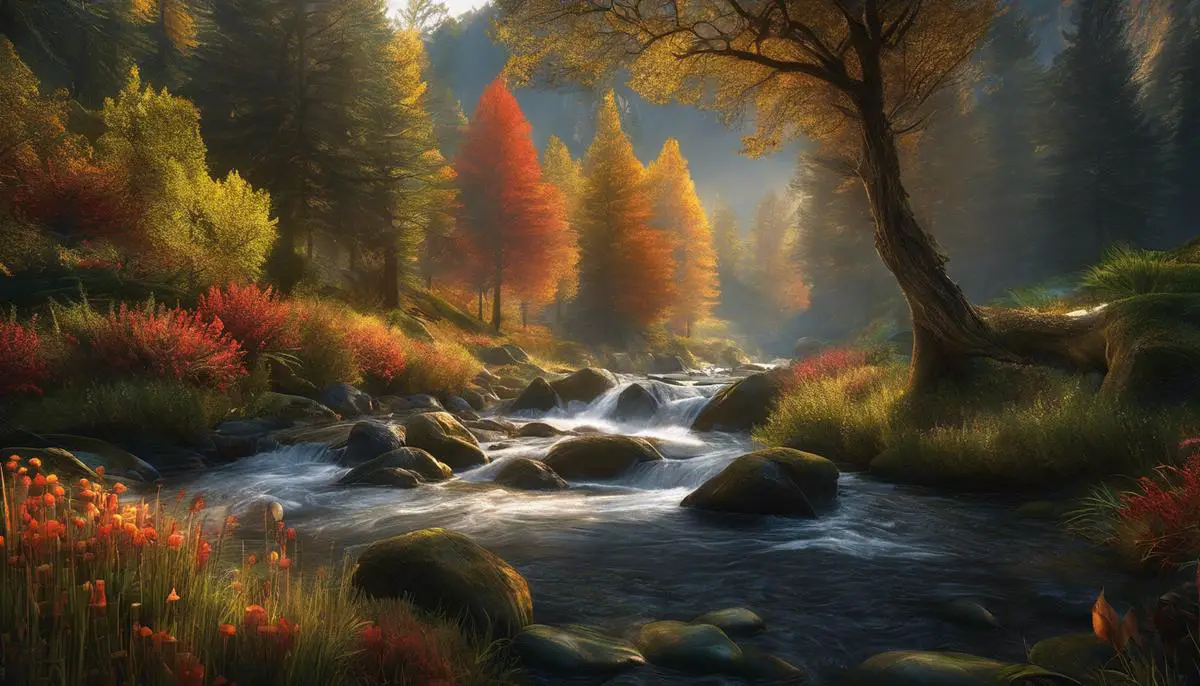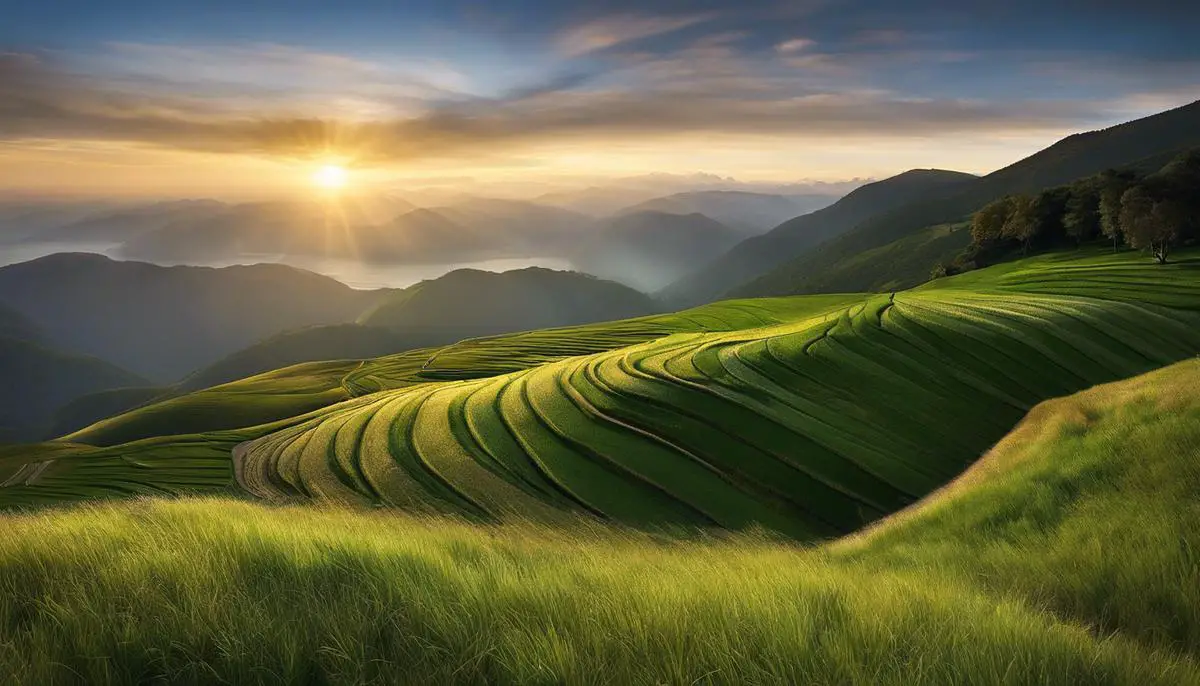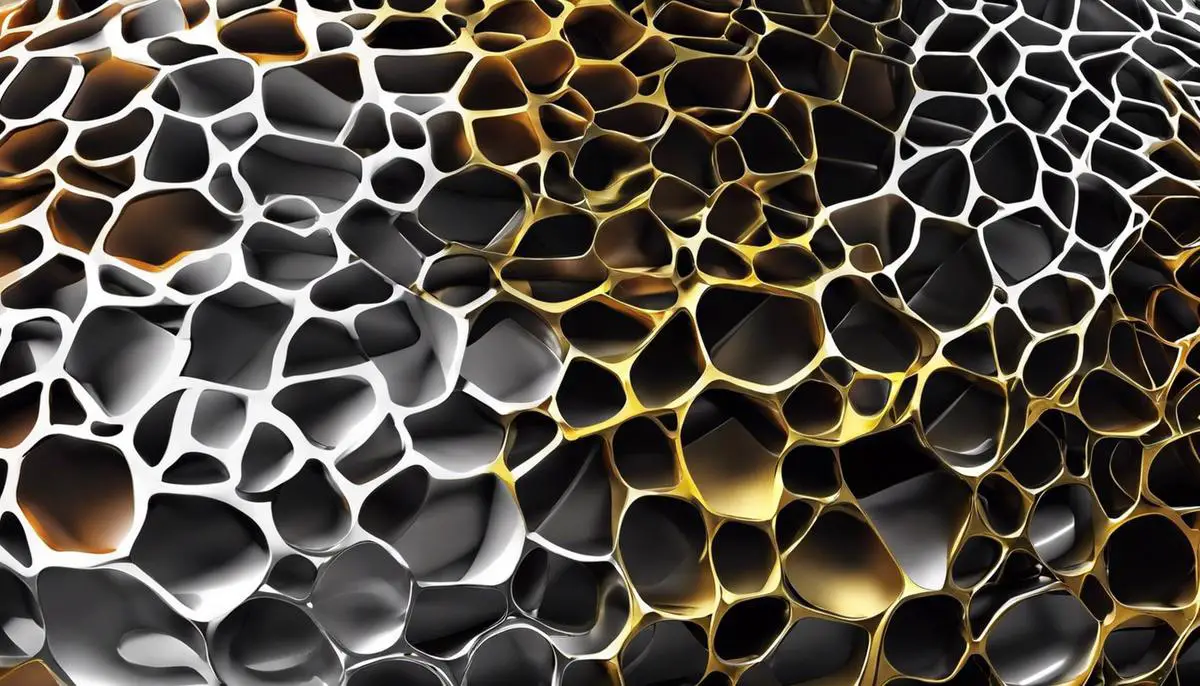High-resolution texture synthesis is the cornerstone of digital imaging in our current age, playing a pivotal role in applications ranging from video gaming and film production to advanced graphic design. It is a concept intertwined with both art and science, a blend of creative vision and technological prowess, aiming to render lifelike textures in digital spaces. This essay dives deep into the fascinating world of texture synthesis, elucidating its cardinal nature and mechanisms. We explore the evolution of this discipline, critically examining the technical developments that amplified its potential and catalyzed its transition into high-resolution. By explicating the intricacies of high-resolution texture synthesis, this essay underscores its significance in various industries and anticipates its potential trajectory and possible predicaments amidst the relentless march of technology.
Contents
Understanding Base Concept: Texture Synthesis
Unveiling the Essentiality of Texture Synthesis in Modern-Day Technology
Texture synthesis, intrinsically weaved into the very fabric of modern-day technology, is a research topic of rampant curiosity in the field of computer science. It refers to the method of creating large, non-repeating patterns, with the specifications of a small input texture. This technique plays a pivotal role in a multitude of arenas, including but not limited to virtual reality, gaming, film, and digital imaging.
A concept formulated and refined over time, texture synthesis emerged as a groundbreaking solution to the issues faced in conventional tiling and replication techniques. Its principal purpose lies in generating larger, seamless textures from a minuscule sample input. This world of textures extends beyond simple monochrome or polychromatic impressions, anatomizing the intricate structures, orientations, and spatial variations in a given pattern.
Texture synthesis mainly bifurcates into two key approaches: parametric and non-parametric. Parametric synthesis executes an analysis on the input texture, sieve out features like color histogram or spatial frequencies, and then generates an output texture based on these parameters. On the contrary, non-parametric synthesis, widely used due to its simplicity and effectiveness, copies pixels from the input texture and pastes them onto the output, thus progressively building the synthesized texture.
The elevated forte of texture synthesis lies in its potential utility across multiple domains. In the realm of virtual reality and gaming, it aids in generating realistic environments, thereby enhancing the immersive experience. The film industry, too, benefits from the digital magic of texture synthesis, enabling the creation of more believable yet cost-effective visual effects.
Moreover, in digital imaging, texture synthesis becomes a potent tool for filling gaps or ‘inpainting’ – an arduous task otherwise. With further advancements, the aspect of ‘style transfer’ has also been actualized, where one image’s stylistic features can be adapted onto another, opening doors to countless creative possibilities.
As for the area of study and research, texture synthesis has been pushing the boundaries of modern computer vision and graphics techniques. Newer algorithms and methodologies are relentlessly being developed to enhance its effectiveness and applications. Yet, the inherent complexity of natural textures and their quantitative characterization present a stimulating challenge, setting the stage for vibrant future research and advancements in the field.
Advanced knowledge and exploration of this intriguing subject also lay the foundation for groundbreaking technology such as AI and machine learning. Leveraging texture synthesis, these technologies can better understand and interpret the world, thereby delivering superior performance – from recognizing objects in images to generating high-quality, realistic content.
Texture synthesis, thus, emerges as more than merely a subject. It is the fruition of decades of dedication, study, research, and ideas. It is an integral tenet of the growing edifice of technology, a testament to human ingenuity and a harbinger of the unimagined wonders technology is yet to unveil.

Fundamentals of High-Resolution Texture Synthesis
Title: High-Resolution Texture Synthesis: A Deep Dive into Its Operation and Distinction
High-resolution texture synthesis is a cardinal component in the digital imaging scene that has experienced monumental advancements, akin to the evolution of Artificial Intelligence (AI) and machine learning. Its intricate operation and contrast to traditional texture synthesis have become pivotal topics of interest for science enthusiasts and scholars alike.
To comprehend the operation of high-resolution texture synthesis, one must grasp the concept of texture in digital imaging. It refers to the visual ‘feel’ or appearance that an image or a portion of it presents. The digital reflection of wood, for instance, can demonstrate grainy texture, while an image of the ocean might have a wavy texture. High-resolution texture synthesis, therefore, aims to recreate these textures accurately and in high detail.
This technique meticulously uses the texture exemplars or samples, employing them onto a grid or pre-defined area in an intricate puzzle-like fashion. Each exemplar is consistently matched and sewed together, ensuring there are minimal noticeable seams and a pattern that appears natural. This procedure is painstakingly repetitive until a synthesized texture that mirrors the original in high resolution is achieved.
Interestingly, while the operation is complex, high-resolution texture synthesis leverages the power of sophisticated algorithms alongside computational techniques to enhance efficiency. Notably, it employs the use of convolutional neural networks (CNNs) to optimize the extraction of patterns and details to enhance the quality and appeal of the final output.
Drawing distinctions between high-resolution texture synthesis and conventional texture synthesis illuminate the advancements in digital imaging. Traditional texture synthesis, albeit effective in producing visually appealing images, often falls short in replicating the precise details, pattern, or look of a texture, specifically when fine details are involved.
On the other hand, high-resolution texture synthesis triumphs in meticulously replicating both coarse and fine-grained textures, thereby producing images that are incredibly close to the original sample. This property aids in developing visually realistic virtual environments for games, films, and virtual reality, redefining viewer immersion and engagement in digital media.
Additionally, while traditional methods are often spatially constrained, necessitating the entire texture to be processed as a whole, high-resolution synthesis introduces the advantage of spatial flexibility. It permits texture synthesis in localized areas, hence accommodating varying texture patterns across an image, and ultimately generating highly distinct and detailed results.
In conclusion, the operation of high-resolution texture synthesis and its distinguishing elements separate it from traditional methods, underlining its monumental potential. Enhanced efficiency, spatial flexibility, and most notably, the capacity to generate high-resolution images, cement its position as a groundbreaking advancement in digital imaging technology. These dynamics reveal the depth of this exquisite, passion-driven technology, ever-evolving in the vastly expanding universe of AI and digital imaging.

Technical Advancements in High-Resolution Texture Synthesis
With the remarkable trajectory of technology advancement, high-resolution texture synthesis has experienced an era of extraordinary growth and evolution; much of it is bolstered by significant technological breakthroughs.
Central to this evolution has been the progression of sophisticated algorithms, particularly Generative Adversarial Networks (GANs). These deep learning models, acting akin to game players set on competitive cooperation, have provided a robust platform for high-resolution texture synthesis. GANs operate by bridging the gap between generator and discriminator networks, which collaborate and vie against each other to create enhanced, highly realistic textures.
Coupled with GANs, the emergence of upsampling techniques has also driven the advancement of high-resolution texture synthesis. Techniques such as sub-pixel Convolutional Layer methods have enabled the production of larger output images, catering for a plethora of textures to be synthesized with significantly higher resolutions. These methods allow upscaling of lower-resolution images without the loss or blurring associated with traditional upsampling methods, providing a better raw-material base for texture synthesis to operate.
The pivotal role of graphics processing units (GPUs) cannot also be understated within this narrative of high-resolution texture synthesis evolution. GPUs, with their superior processing capabilities and specialized graphical support, have facilitated the execution of complex tasks associated with the synthesis process. By harnessing these high-performing units, larger texture databases can be processed, promoting overall picture quality and enhancing viewer ability to perceive even the subtlest changes in texture.
Another critical advancement that has pushed the boundaries of high-resolution texture synthesis is the deployment of wavelet transformation. This mathematical tool allows texture features to be processed in both the frequency and spatial domain, providing them with a multidimensional platform to comfortably exist in higher resolution formats. Wavelet transformation, coupled with multi-resolution analysis, carves out an effective route for synthesizing high-resolution textures, bypassing hurdles tied to computational complexity.
Finally, the development of perceptual loss functions has added a new feather to the cap of high-resolution texture synthesis. These functions determine the perceptual differences between synthesized and original textures, enhancing the synthesis process by emphasizing the detail preservation and salient texture characteristics. These functions aid the synthesis algorithm to focus on aspects that are perceptually significant, leading to high-quality and very realistic outputs.
Indeed, monumental strides in algorithmic development, the advent of stronger GPUs, pioneering techniques for upsampling, and perceptual metrics have poised high-resolution texture synthesis for new frontiers. Strongly embedded within these advancements lies the potential for continued evolution, promising an intriguing future, synergistically blending the realms of technology and texture synthesis.

Application and Utility of High-Resolution Texture Synthesis
High-resolution texture synthesis has advanced the realm of science and technology with impressive strides recently. This phenomenon continues to propel paramount transformations in the digital world, manifesting significant impacts in our everyday lives. Reiterating its indispensability means shedding light on its most auspicious applications and the enrichment it confers upon those areas.
One of the key domains of application of high-resolution texture synthesis is Geographic Information Systems (GIS). GIS deals with storage, manipulation, analysis, and representation of geographical data. When dealing with real-world terrains, texture synthesis provides realistic visual representations, enhancing the credibility of the simulations. High-resolution textures allow a nuanced portrayal of natural elements like soil, vegetation, and water bodies. This comes incredibly handy in disaster management predictions, urban planning, and environment conservation; effectively generating an insightful impact on society and the planet.
Another pivotal field where high-resolution texture synthesis finds striking utilization is Healthcare. It augments medical imaging — from improving the aesthetic realism of organ models for surgical preparation to enhancing visual diagnoses by refining the detail in scans like Computer Tomography and Magnetic Resonance Imaging. This results in a more precise understanding of the patients’ conditions and ultimately, better treatment.
This scientific marvel also bears an extensive imprint on the fine arts field. Film and theatre set designs, architectural visualizations, and digital blueprint designs for monuments and landscapes have all been profoundly revolutionized by high-resolution texture synthesis. It lends an unmatched level of realism, providing designers with an accurate high-definition expression of their imagination, ranging from extraterrestrial panoramas to historical reclamations.
In tandem with technological advancement, high-resolution texture synthesis also facilitates advancements in textile fashion design. The method allows designers to create intricate patterns, weave structures, and fabric textural representations virtually. It significantly expedites the prototype development process, enabling designers to visualize their final product more effectively before actual production.
However, the ultra-high potential of the method is seen in the arena of forensic sciences. Because of the high-resolution texture synthesis’ remarkable capacity to conjure realistic textures from a small sample, it is used to reconstruct partial prints, or damaged evidences, offering vital leads to solve criminal cases.
Evidently, the power of high-resolution texture synthesis is enormous. As progress continues to be made in the field, and as technology continues to advance, the utility and effectiveness of this technique will only continue to increase. Simultaneously, the potential for new applications also seems boundless, and it’s fascinating to ponder what might be around the corner in the ongoing evolution of high-resolution texture synthesis.

Future Prospects and Challenges of High-Resolution Texture Synthesis
Looking Ahead: High-Resolution Texture Synthesis and Its Challenges
The vista of high-resolution texture synthesis has been broadening, and the beat of innovation keeps growing louder. Pertinent fields like Geographic Information Systems (GIS), healthcare, fine arts, textile fashion design, and forensic sciences are all braced to harness the potential of refined texture synthesis techniques. But like any blistering pace of technological advancement, it brings about new challenges that must be confronted.
The yield of high-resolution texture synthesis in Geographic Information Systems (GIS) can be transformative. The accuracy and realism of geospatial data can be substantially enhanced, potentially informing better decisions in urban planning, resource management, and hazard prediction among others. However, the challenge rests in dealing with diverse geographical textures. The accurate synthesis of a wide range of textures – from the roughness of mountain terrains to the fluid dynamics of water bodies – will necessitate advanced models that abide by the laws of physics while maintaining computational feasibility.
In healthcare, the ability to synthesize high-resolution tissue textures can play a pivotal role in training medical professionals, planning surgeries, or even in producing synthetic data for privacy-preserving research. Yet, biological textures are inherently complex and vary from patient to patient. The challenge is to develop techniques that can cater to this variability and improve the synthesis outputs’ realism without requiring prohibitive computation times.
High-resolution texture synthesis also holds a promising future in the realm of fine arts and fashion design. Improved textures can bring digital set designs and architectural visualizations to life, rendering them nearly indistinguishable from the real world. Synthetic fabrics in clothing design can be better visualized before production. However, the critical question to address is how to preserve creative control in the presence of these sophisticated AI-driven technologies.
Forensic sciences are another arena where high-resolution texture synthesis may redefine present limitations. Detailed and accurate recreation of crime scene elements can considerably assist investigation and legal procedures. Nevertheless, ethical guidelines need to be carefully constructed to prevent misuse and ensure that synthetic textures are not manipulated to lead investigations astray.
As we gaze into the future of high-resolution texture synthesis, we’re bound to witness a new wave of innovation. While these challenges pose substantial hurdles, it’s crystal clear that with collective scientific conviction, the distance between these obstacles and their solution will continue to shrink.

The transformative expediency of high-resolution texture synthesis, interfacing technology with artistic realism, has reshaped the landscape of visual representation. Its widespread applications underscore its immense potential as we thrust further into a digitized world. However, alongside the promising strides in this dynamic field are challenges that must be holistically addressed. Fundamental concerns reverberate around perpetual efforts to maintain a balance between computational efficiency and texture quality, while predictive fears loom over the possible stagnation in innovation due to increasing resolution demands. The narrative of high-resolution texture synthesis, therefore, is not merely a tale of triumph but also a call to action — an advocacy for continuous research, development, and adaptive strategies to shape the future of realistic virtual depiction.

Emad Morpheus is a tech enthusiast with a unique flair for AI and art. Backed by a Computer Science background, he dove into the captivating world of AI-driven image generation five years ago. Since then, he has been honing his skills and sharing his insights on AI art creation through his blog posts. Outside his tech-art sphere, Emad enjoys photography, hiking, and piano.

